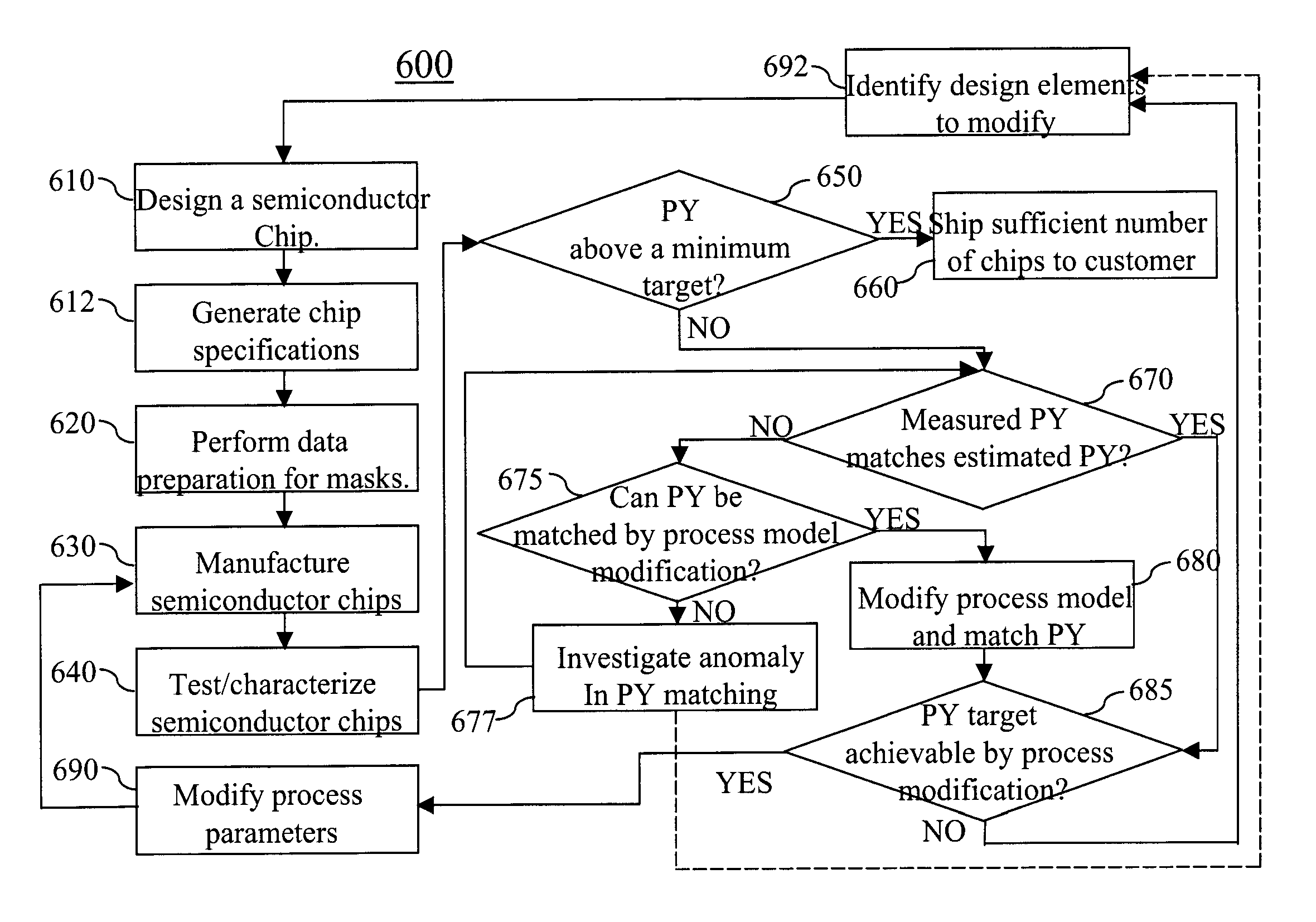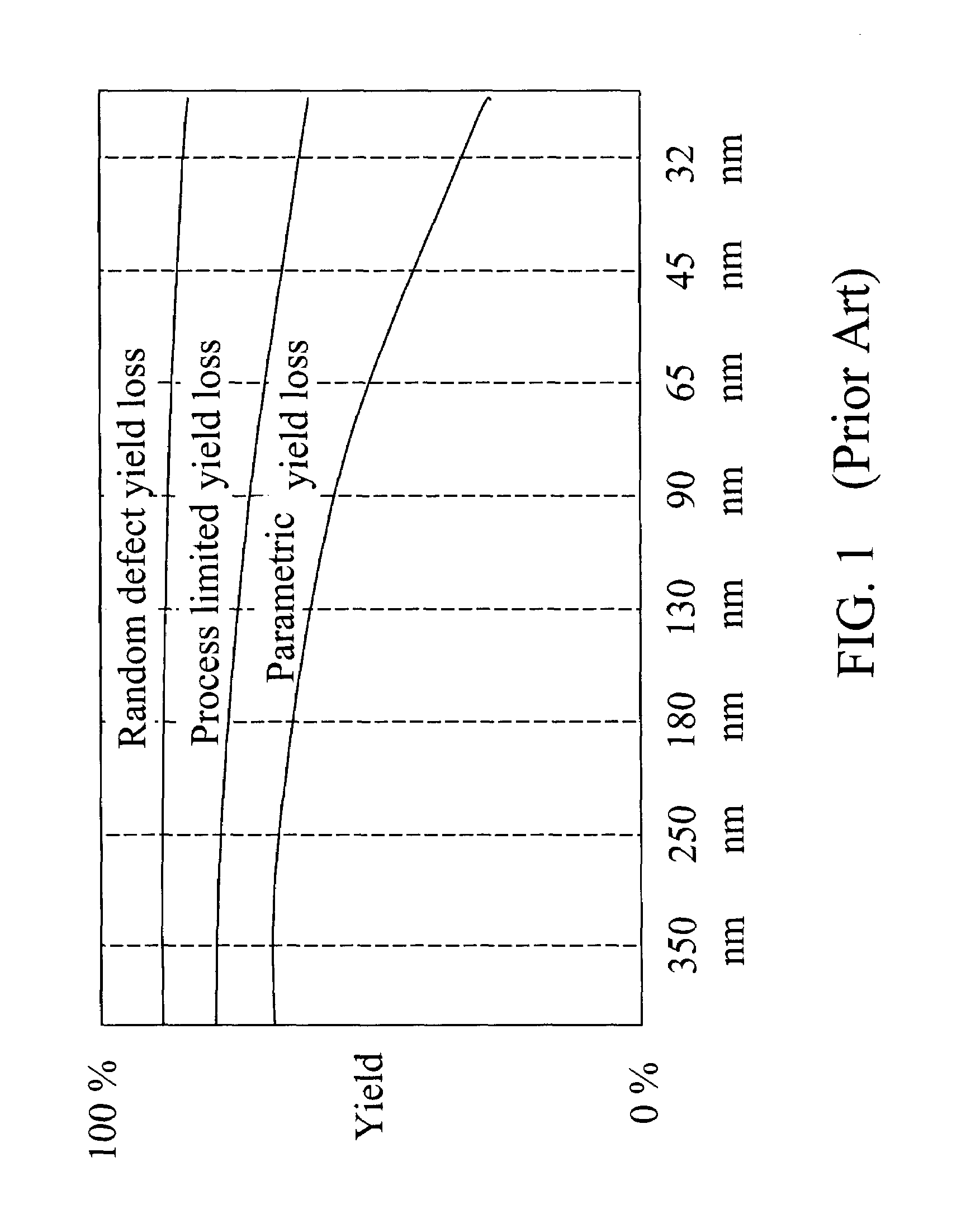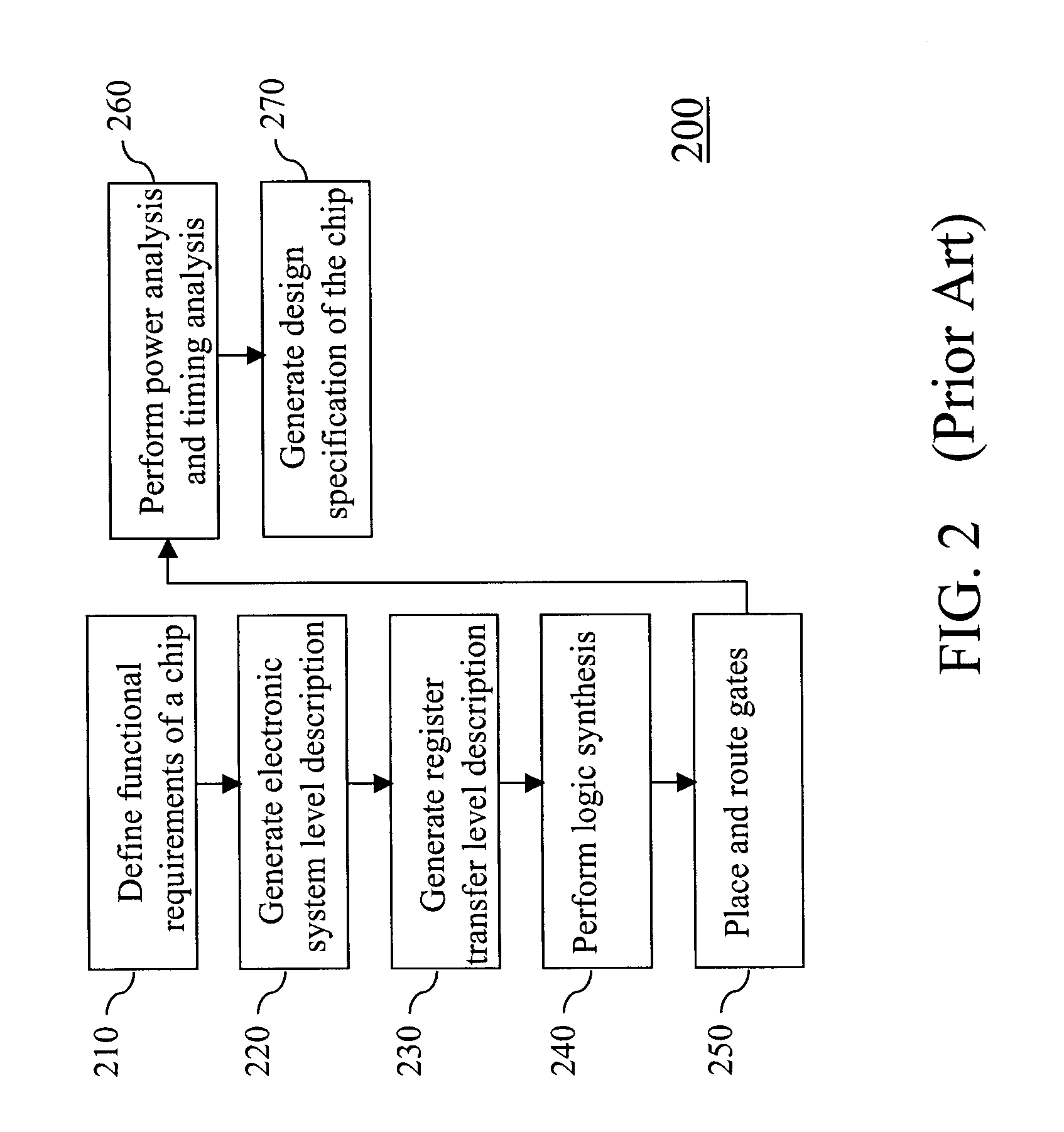Methods and system for analysis and management of parametric yield
a parametric yield and parametric technology, applied in the field of methods, can solve the problems of random defect yield loss due to yield loss, random defect yield loss in successive technology generation, process limited yield loss, etc., and achieve the effect of improving the accuracy of the process model
- Summary
- Abstract
- Description
- Claims
- Application Information
AI Technical Summary
Benefits of technology
Problems solved by technology
Method used
Image
Examples
Embodiment Construction
[0134]As stated above, the present invention relates to methods and systems for analyzing and improving parametric yield in semiconductor device manufacturing, which are now described in detail with accompanying figures. It is noted that like and corresponding elements mentioned herein and illustrated in the drawings are referred to by like reference numerals.
[0135]In a transistor, the distance between source and drain regions of the transistor and an edge of a well containing the source and drain regions affects the threshold voltage of the transistor. Such effects are known in the art as well proximity effects. U.S. Pat. No. 7,089,513 to Bard et al. describes well proximity effects and is herein incorporated by reference.
[0136]Due to well proximity effects, threshold voltages of the p-type field effect transistors of the same category that differ only by the size, i.e., the width of the gate that is the dimension of an active area abutting a gate dielectric along the direction per...
PUM
 Login to View More
Login to View More Abstract
Description
Claims
Application Information
 Login to View More
Login to View More - R&D
- Intellectual Property
- Life Sciences
- Materials
- Tech Scout
- Unparalleled Data Quality
- Higher Quality Content
- 60% Fewer Hallucinations
Browse by: Latest US Patents, China's latest patents, Technical Efficacy Thesaurus, Application Domain, Technology Topic, Popular Technical Reports.
© 2025 PatSnap. All rights reserved.Legal|Privacy policy|Modern Slavery Act Transparency Statement|Sitemap|About US| Contact US: help@patsnap.com



